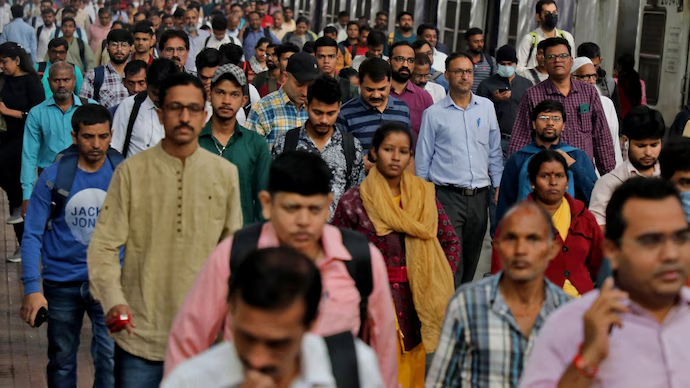The Lok Sabha delimitation process is scheduled for 2028, and the center is expected to start its population census in 2025. government will likely move forward with the long-planned national census, which should be finished by 2026.
The long-delayed population census is expected to start in 2025 under the Narendra Modi-led NDA government and be finished by 2026. A nationwide delimitation process for Lok Sabha seats would thereafter take place, with completion anticipated by 2028.
According to a government source who spoke to media, plans are in motion to start the deccanial census in 2025, with the exception of the caste census, in order to prevent the opposition from bringing up the subject before assembly elections in states like Bihar and others.
According to other hints from the sources, the census was supposed to begin in 2021 but was unable to proceed because of the country’s COVID-19 pandemic’s second wave.
The center, however, has rejected it, stating that there isn’t currently such a plan.
Although calls for a census from different political parties persisted over time, the nation did not hold one following its previous decennial population census in 2011. The opposition, backed by the Congress, has stepped up its attacks on the Modi administration, especially in relation to the caste census.
According to sources, the administration is anticipated to move forward with the national census rather than a caste census.
The purpose of this census is to gather information on development indices, population growth, and other aspects that are critical to long-term planning and efficient government. In order to finish the census within a given time frame, the government is creating a strategy to mobilize a sizable workforce.
Notably, since 1881, India has carried out a census every ten years. According to the 2011 census, India had a population of 121.1 crore.
The COVID-19 pandemic forced a postponement of the first phase of this decade’s census, which was originally scheduled to start on April 1, 2020.
With an estimated population of about 142 crore (1,425,775,850), the United Nations said in an April 2023 report that India had overtaken China as the most populous nation in the world between 2011 and the present.
According to a senior government source, “the data on the national census will be in the public domain by 2026 as the census will be conducted in a mission mode.” The delimitation process for LS constituencies will be carried out in accordance with the nationwide national census.
According to political insiders, the Lok Sabha constituency delimitation process would expand the number of seats in some states and redraw the borders of current constituencies in accordance with population patterns.
Lok Sabha
According to a source, the Lok Sabha constituency delimitation procedure is expected to be finished a year prior to the 2029 next election.
Delimitation is the act or process of establishing the borders or limits of territorial constituencies in a province or nation with a legislature. A powerful body is tasked with the task of delineation. The organization is referred to as a boundary commission or delimitation commission.
There have been four instances of Delimitation Commissions in India: the Delimitation Commission Act of 1952, the Delimitation Commission Act of 1962, the Delimitation Act of 1973, and the Delimitation Act of 2002.
A number of South Indian state leaders have already voiced their worries that North India’s large population will give them more seats while underrepresenting states that controlled the population.
Past census
Males made up 51.5% (623.2 million or 62.32 crore) of India’s total population of 1.21 billion, or 121.1 crore, according to the 2011 Census, while females made up 48.5% (587.7 million or 58.77 crore).
The most populous state was Uttar Pradesh, which had 199.5 million people (19.95 crore), followed by Maharashtra, which had 112 million people (11.2 crore). Sikkim was the least populated state, with 610,577 (6.11 lakh) people.
Arunachal Pradesh had the lowest population density, while Bihar had the highest. Out of all the union territories, Lakshadweep had the least population. Bihar and Haryana had the lowest literacy rates and the lowest sex ratios, whereas Kerala had the highest both.
Between 2001 and 2011, India’s population grew by more than 181 million people, or 18.1 crore, or 17.64%. The growth rate was 17.19% for boys and 18.12% for females.
According to the 2011 census, 68.8% of people lived in rural areas (833.8 million or 83.38 crore), whereas 31.2% of people lived in urban areas (377.1 million or 37.71 crore). Furthermore, migrants accounted for 453.6 million (45.36 crore), or 37.8% of the total population.
The following was the religious composition in 2011: Muslims made up 14.2% (172.2 million or 17.22 crore), Christians 2.3% (27.8 million or 2.78 crore), Sikhs 1.7% (20.8 million or 2.08 crore), Buddhists 0.7% (8.4 million or 84 lakh), Jains 0.4% (4.5 million or 45 lakh), Hindus 79.8% (964.6 million or 96.46 crore), and other
From 1991-2001 to 2001-2011, the percentage decadal growth rates for the six most populous states decreased: Madhya Pradesh went from 24.26% to 20.30%, Maharashtra went from 22.73% to 15.99%, Bihar went from 28.62% to 25.07%, West Bengal went from 17.77% to 13.93%, Andhra Pradesh went from 14.59% to 11.10%, and Uttar Pradesh went from 25.85% to 20.09%.















Leave a Reply